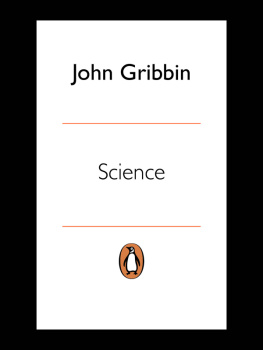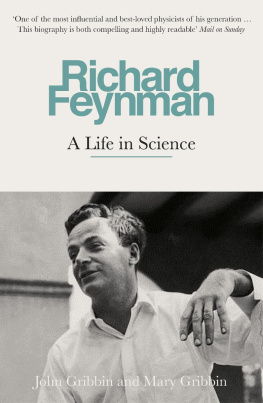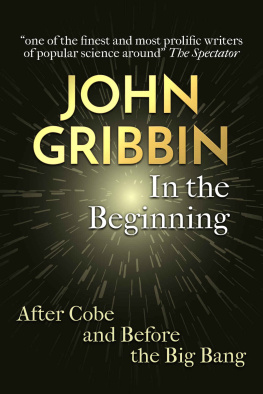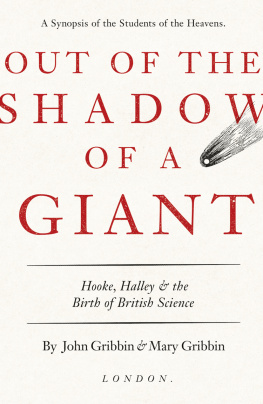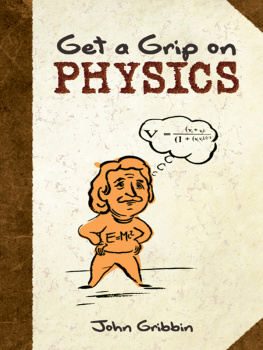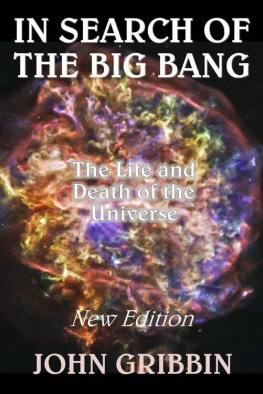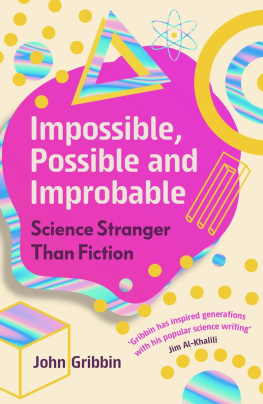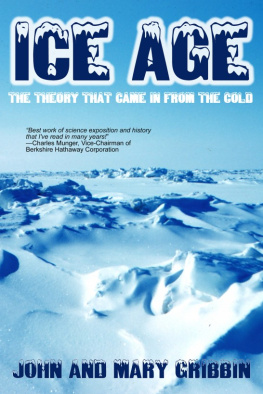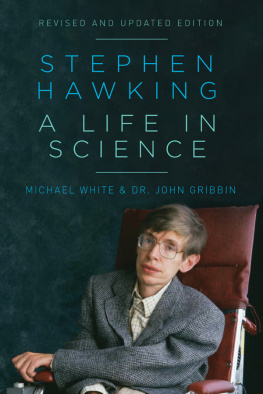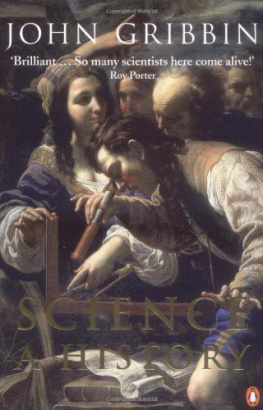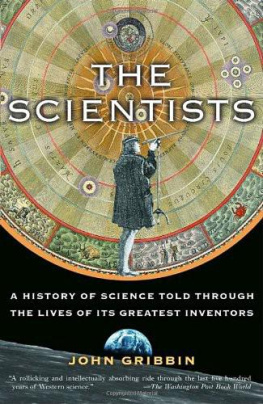PENGUIN BOOKS
SCIENCE
Gribbin is adept at capturing the personality of his protagonists within a few paragraphs, and so loves science and scientists that his enthusiasm permeates the text The story of Western science over the past 500 years has been one of humanitys successes. He has provided an excellent introductory framework to a terrific subject Terence Kealey, Sunday Telegraph
A fascinating and readable scientific history Adrian Berry, Literary Review
The giants of science get their due here, but so too do the lesser-sung heroes much of the history of science reads like a detective story, which in the hands of a skilled narrator like Gribbin makes the description of each new advance appear as an illumination. Among the things I most enjoyed in the book are Gribbins account of Newtons quarrels and sourness, his lucid survey of the development of quantum theory, and his equally lucid and synoptic account of the present state of cosmology A. C. Grayling, Independent on Sunday
A hard act to follow New Scientist
John Gribbin is to be hugely congratulated for his achievement. This book is the product of immense learning and a lifetime spent working out how to write in a vivacious way about science and scientists Robert Macfarlane, Spectator
ABOUT THE AUTHOR
John Gribbin trained as an astrophysicist at Cambridge University and is currently Visiting Fellow in Astronomy at the University of Sussex. His many books include In Search of Schrdingers Cat, Stardust and Ice Age, with Mary Gribbin.
1. A mythical meeting of minds Aristotle, Hevelius and Kepler arguing about the orbits of comets. From Heveliuss Cometographia, 1668.
JOHN GRIBBIN
SCIENCE
A HISTORY
15432001

PENGUIN BOOKS
PENGUIN BOOKS
Published by the Penguin Group
Penguin Books Ltd, 80 Strand, London WC2R 0RL , England
Penguin Group (USA) Inc., 375 Hudson Street, New York, New York 10014, USA
M4V 3B2
Penguin Books India Pvt Ltd, 11 Community Centre, Panchsheel Park, New Delhi 110 017, India
Penguin Group (NZ), Cnr Airborne and Rosedale Roads, Albany, Auckland 1310, New Zealand
Penguin Books (South Africa) (Pty) Ltd, 24 Sturdee Avenue, Rosebank 2196, South Africa
Penguin Books Ltd, Registered Offices: 80 Strand, London WC2R 0RL , England
www.penguin.com
First published by Allen Lane The Penguin Press 2002
Published in Penguin Books 2003
Copyright John and Mary Gribbin, 2002
All rights reserved
The moral right of the author has been asserted
Except in the United States of America, this book is sold subject to the condition that it shall not, by way of trade or otherwise, be lent, re-sold, hired out, or otherwise circulated without the publishers prior consent in any form of binding or cover other than that in which it is published and without a similar condition including this condition being imposed on the subsequent purchaser
ISBN: 978-0-14-104222-0
List of Illustrations
Every effort has been made to trace copyright holders. Penguin Books apologizes for any omissions and, if informed of any such cases, would be pleased to update any future editions.
von Guerickes Experimenta Nova, 1672. Courtesy of the Science & Society Picture Library.
Acknowledgements
I am grateful to the following institutions for providing access to their libraries and other material: Acadmie Franaise and Jardin des Plantes, Paris; Bodleian Library, Oxford; British Museum and Natural History Museum, London; Cavendish Laboratory, Cambridge; Geological Society, London; Down House, Kent; Linnaean Society, London; Royal Astronomical Society; Royal Geographical Society; Royal Institution; Trinity College, Dublin; University of Cambridge Library. As always, the University of Sussex provided me with a base and support, including Internet access. It would be invidious to single out any of the many individuals who discussed aspects of the project with me, but they know who they are, and all have my thanks.
Both singular and plural forms of the personal pronoun appear in the text. I, of course, is used where my own opinion on a scientific matter is being presented; we is used to include my writing partner, Mary Gribbin, where appropriate. Her help in ensuring that the words which follow are comprehensible to non-scientists is as essential to this as to all my books.
Introduction
The most important thing that science has taught us about our place in the Universe is that we are not special. The process began with the work of Nicolaus Copernicus in the sixteenth century, which suggested that the Earth is not at the centre of the Universe, and gained momentum after Galileo, early in the seventeenth century, used a telescope to obtain the crucial evidence that the Earth is indeed a planet orbiting the Sun. In successive waves of astronomical discovery in the centuries that followed, astronomers found that just as the Earth is an ordinary planet, the Sun is an ordinary star (one of several hundred billion stars in our Milky Way galaxy) and the Milky Way itself is just an ordinary galaxy (one of several hundred billion in the visible Universe). They even suggested, at the end of the twentieth century, that the Universe itself may not be unique.
While all this was going on, biologists tried and failed to find any evidence for a special life force that distinguishes living matter from non-living matter, concluding that life is just a rather complicated form of chemistry. By a happy coincidence for the historian, one of the landmark events at the start of the biological investigation of the human body was the publication of De Humani Corporis Fabrica (On the Structure of the Human Body) by Andreas Vesalius in 1543, the same year that Copernicus eventually published De Revolutionibus Orbium Coelestium (On the Revolutions of Celestial Bodies). This coincidence makes 1543 a convenient marker for the start of the scientific revolution that would transform first Europe and then the world.
2. A plate from Martin Cortes de Albacars Breve compendio de la esfera y de la arte de navigar, 1551.
Of course, any choice of a starting date for the history of science is arbitrary, and my own account is restricted geographically, as well as in the time span it covers. My aim is to outline the development of Western science, from the Renaissance to (roughly) the end of the twentieth century. This means leaving to one side the achievements of the Ancient Greeks, the Chinese, and the Islamic scientists and philosophers who did so much to keep the search for knowledge about our world alive during the period that Europeans refer to as the Dark and Middle Ages. But it also means telling a coherent story, with a clear beginning in both space and time, of the development of the world view that lies at the heart of our understanding of the Universe, and our place in it today. For human life turned out to be no different from any other kind of life on Earth. As the work of Charles Darwin and Alfred Wallace established in the nineteenth century, all you need to make human beings out of amoebas is the process of evolution by natural selection, and plenty of time.
All the examples I have mentioned here highlight another feature of the story-telling process. It is natural to describe key events in terms of the work of individuals who made a mark in science Copernicus, Vesalius, Darwin, Wallace and the rest. But this does not mean that science has progressed as a result of the work of a string of irreplaceable geniuses possessed of a special insight into how the world works. Geniuses maybe (though not always); but irreplaceable certainly not. Scientific progress builds step by step, and as the example of Darwin and Wallace shows, when the time is ripe, two or more individuals may make the next step independently of one another. It is the luck of the draw, or historical accident, whose name gets remembered as the discoverer of a new phenomenon. What is much more important than human genius is the development of technology, and it is no surprise that the start of the scientific revolution coincides with the development of the telescope and the microscope.
Next page
